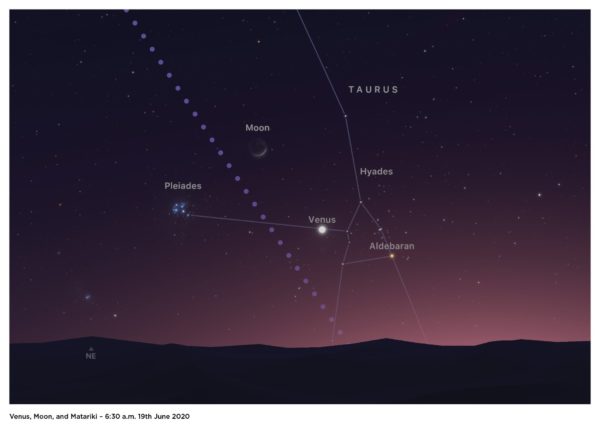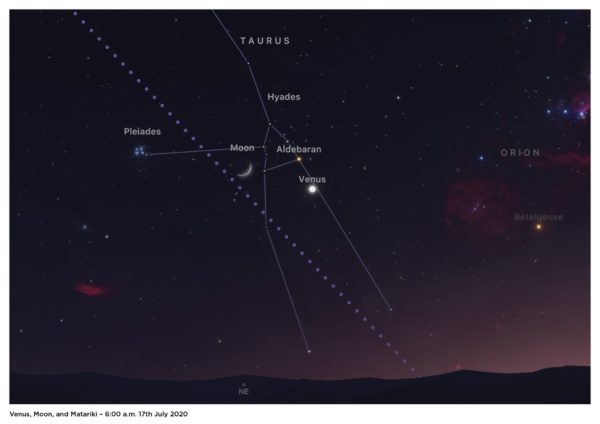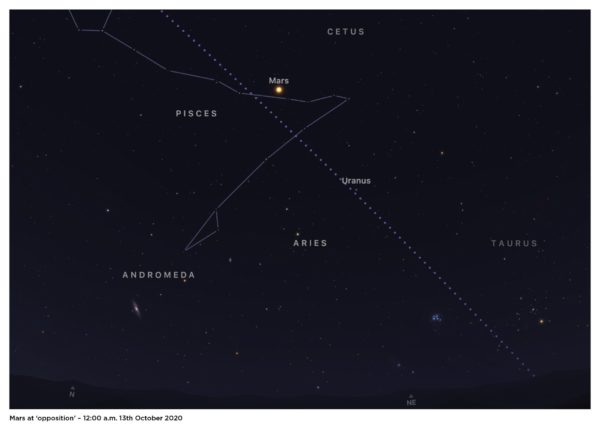Navigating the stars.
As my ode to Witi Ihimaera, the Stardome Observatory tells me:
- Five planets can be seen with the unaided eye.
- Planets look different from stars and different from each other.
- How close a planet is to the horizon affects how bright it appears. When high, there’s less air to look through – so the higher they are, the brighter they appear.
- Mars’ brightness varies hugely over the course of a couple of years.
- Mercury (the hardest to spot) and Venus (the easiest) are sometimes called the ‘evening’ or ‘morning’ star. Mercury comes and goes very quickly (just a few weeks) while the others hang around for many months.
- The planets will always be found near the ecliptic against the backdrop of the Zodiac constellations – approximately east or west when rising or setting, or near north when they are highest in the sky.


Mars is stooging around in the early morning sky as I write but as spring approaches it will appear in the evening sky as well. Approaching mid-October 2020 it will reach opposition and will be brighter than Jupiter and won’t be this bright again until June 2033! Best viewing will be around midnight half-way up the northern sky.

The giant planets Jupiter and Saturn will be in our evening sky for the rest of 2020. Watch this pair as they slowly draw closer to one other. On 21st December they’ll give us a one in twenty year treat as they seemingly almost ‘touch’. Called a ‘great conjunction’ we might think of this as a modern rendition of the Christmas Star 😊.
SAY WHAT_!?

